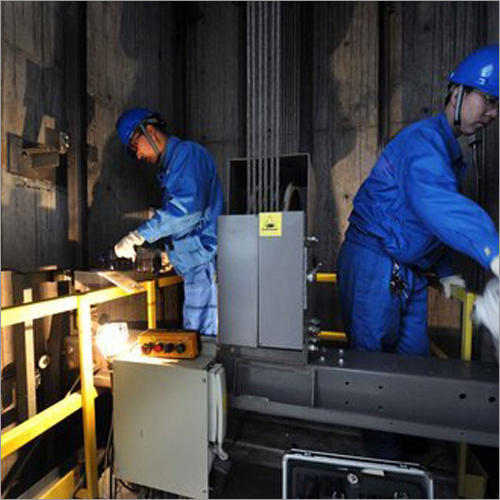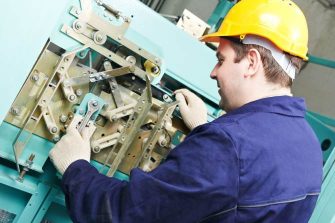Leading Lift Repair Companies Near Me for Dependable Maintenance Services
Leading Lift Repair Companies Near Me for Dependable Maintenance Services
Blog Article
Vital Factors to Consider for Elevator Upkeep
When it comes to the efficient and secure procedure of elevators, taking into consideration important maintenance factors is vital. It is critical for constructing managers and upkeep employees to stay ahead of these elements to maintain the elevator's performance requirements and compliance demands.
Regular Assessment Schedules

Performing routine inspections not only improves the total performance of the elevator but likewise plays a crucial duty in abiding with safety policies and sector criteria. It guarantees that the elevator operates smoothly, minimizing the danger of unexpected malfunctions that can hassle occupants or concession security. Additionally, regular inspections add to prolonging the life-span of the lift equipment, ultimately minimizing upkeep costs and downtime.
To improve the assessment process, many structure owners companion with qualified lift upkeep business that concentrate on carrying out detailed analyses and providing timely upkeep solutions. By focusing on routine inspection routines, stakeholders can maintain the security, dependability, and performance of their elevator systems.
Proper Lubrication Techniques
Reliable lubrication methods are necessary for keeping the optimal efficiency and long life of lift elements. Appropriate lubrication techniques play an important role in stopping damage on moving parts, lowering rubbing, and guaranteeing smooth operation of the elevator system. When it comes to elevator upkeep, using the best lubes in the right amounts at the suggested periods is key to protecting against costly repairs and lessening downtime.
To ensure appropriate lubrication, elevator professionals have to comply with manufacturer guidelines relating to the kind of lubricant to be utilized for particular components such as bearings, equipments, and guide rails - lift engineer course. Over-lubrication can draw in dirt and debris, resulting in element breakdowns, while under-lubrication can cause increased friction and early wear. On a regular basis scheduled lubrication upkeep should be included in the overall lift upkeep strategy to keep the system running effectively and securely
Checking Tear and put on
Lift maintenance workers need to conduct regular assessments to recognize indications of wear on crucial components such as ropes, sheaves, guide rails, and bearings. click now In addition, keeping thorough maintenance records can aid in tracking the wear patterns of lift components over time, enabling for predictive maintenance preparation. By closely checking wear and tear, upkeep teams can resolve concerns proactively before they rise into costly repair services or unforeseen downtime, ensuring the effective and safe operation of the lift system.

Security Conformity Checks
Conducting thorough safety and security conformity checks is essential in ensuring the lift system meets all regulatory requirements and functional requirements. Safety and security compliance checks involve a detailed examination of different components such as emergency brakes, door sensors, interlocks, and electrical systems to guarantee they are great site functioning correctly. Normal examinations by qualified experts aid recognize potential safety and security hazards prior to they escalate into significant problems, ensuring the security of guests and compliance with market laws. These checks also include verifying that the lift's capability limitations, rate, and emergency communication systems are in line with safety requirements. Furthermore, adherence to safety compliance checks can stop accidents, reduce responsibility dangers for building owners, and extend the lifespan of the lift system. By prioritizing safety and security compliance checks as part of routine upkeep, structure managers can maintain a secure and reliable vertical transportation system for owners.
Emergency Situation Response Preparation
Because of the crucial value of security conformity checks in their website keeping elevator systems, a robust emergency situation feedback planning method is vital to promptly and properly address unpredicted cases. lift engineer course. Emergency action preparation for elevators includes positive actions to guarantee the security of passengers and maintenance employees in case of emergency situations such as power outages, entrapments, or mechanical failures
Trick parts of an effective emergency situation reaction strategy include establishing clear communication protocols, offering regular training to team on emergency procedures, keeping up-to-date emergency get in touch with lists, and performing regular drills to practice feedback activities. Additionally, it is necessary to have assigned employees in charge of coordinating emergency reactions and making certain that required tools, such as emergency situation lights and communication devices, are in functioning order.
Verdict
In conclusion, it is vital to prioritize routine examination timetables, appropriate lubrication techniques, checking wear and tear, safety and security conformity checks, and emergency action preparation for lift maintenance. By executing these important variables, structure owners can make sure the security and efficiency of their lifts, inevitably lowering the risk of breakdowns and accidents. Consistent maintenance techniques are essential for lengthening the life-span of elevators and guaranteeing the well-being of people that rely upon them for transportation.
Regularly arranged lubrication maintenance need to be consisted of in the general lift upkeep strategy to maintain the system running effectively and securely.
Lift upkeep personnel must conduct regular assessments to recognize indicators of wear on vital parts such as ropes, sheaves, guide rails, and bearings. In addition, maintaining detailed maintenance records can aid in tracking the wear patterns of elevator parts over time, enabling for anticipating upkeep planning. By very closely keeping track of wear and tear, upkeep teams can resolve problems proactively before they rise right into costly fixings or unanticipated downtime, guaranteeing the effective and risk-free procedure of the lift system.

Report this page